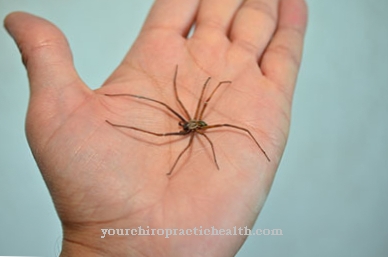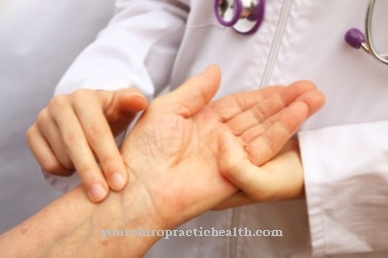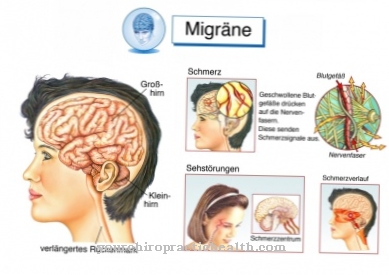The Cardio-Facio-Cutaneous Syndrome is a very rare genetic disease. It is characterized by the appearance of various physical and mental impairments. The disease can only be treated symptomatically.
What is Cardio-Facio-Cutaneous Syndrome?

© Dan Race - stock.adobe.com
The Cardio-Facio-Cutaneous Syndrome is characterized by multiple physical malformations and mental development delays. Not much is known about this disease. There are always sporadic cases. Not much can be said about prevalence either. About 80 to 100 children are known to have this syndrome. The disease was first described in 1986 by J. F. Reynolds.
As already indicated in the name, the heart, face and skin are characterized by malformations. An autosomal dominant inheritance of this disorder is suspected. So far, however, no cases of illness have been found in the families of the sick, so that a spontaneous mutation is assumed. So far it cannot be said whether it is a uniform disease. The syndrome has many similarities to Noonan or Costello's syndrome.
However, these are precisely defined diseases, from which the cardio-facial-cutaneous syndrome must be differentiated in a differential diagnosis. Both Noonan's and Costello's syndromes are characterized by complex malformations of several organs and body parts. The heart and skin are particularly involved in both syndromes.
Noonan or Costello's syndrome has already been diagnosed several times for the cardio-facio-cutaneous syndrome, although the diagnosis had to be revised by experienced doctors for years.
causes
As already mentioned, the cause of the cardio-facio-cutaneous syndrome is not yet known. However, a gene mutation is assumed. There is even the assumption that several mutations in different genes lead to this disease. In this case it would not be a uniform disease.
The similar symptoms make the syndrome appear as a single disease. It is only assumed that there is a spontaneous mutation in a gene that has not yet been identified. What all cases have in common is that no similar illness has occurred in any of the families.
Symptoms, ailments & signs
The cardio-facial-cutaneous syndrome has a variety of malformations. A psychomotor retardation is noticeable. Furthermore, nutritional problems arise, which in some cases make artificial nutrition necessary. The result of the nutritional disorder is short stature. The face is noticeable and there is microencephaly.
The eyebrows are missing, with the scalp hair appearing sparse and thin. The heart defect is also one of the key symptoms. There is pulmonary stenosis, atrial septal defect, and myotropic cardiomyopathy. Pulmonary stenosis is characterized by constrictions that prevent blood from flowing from the right ventricle to the pulmonary artery.
The atrial septal defect manifests itself as a hole in the heart septum. In myotropic cardiomyopathy, the muscles of the left ventricle are thickened asymmetrically. The skin changes show up in the form of a fish scale skin, which is also known as ichthyosis. Foot malformations also occur.
This leads to polydactyly and syndactyly. On the one hand, the number of toes is increased. On the other hand, there are also adhesions of different toes. Mental development is limited. However, scholastic support is possible.
Diagnosis & course of disease
Diagnostically, the cardio-facial-cutaneous syndrome is difficult to differentiate from Noonan or Costello syndrome. The symptoms are very similar. In both of the latter syndromes, however, the genetic defect that causes them is known. In this way, genetic investigations can at least exclude these two syndromes from a differential diagnosis. Even experienced doctors have difficulty classifying cardio-facio-cutaneous syndrome.
As a result of this investigation, reference can only be made to the currently undefined disease. It is not even clear whether there are several different syndromes with the same symptoms. Prenatal examinations are also possible if an undesirable development is suspected. This includes ultrasound examinations and a so-called amniocentesis (amniotic fluid examination).
Complications
This syndrome results in various disorders and impairments in the patient, which have a very negative effect on the quality of life of the person concerned. As a rule, the patient's everyday life is also significantly restricted, so that he or she may have to rely on the help of other people in everyday life. In most cases there are disorders of the psyche and motor skills.
Children in particular can be affected by bullying or teasing. Not infrequently also short stature occurs. Those affected suffer from a heart defect, which can significantly reduce life expectancy. Eating disorders are also not uncommon, so deficiency symptoms can occur. Malformations can also occur on the extremities, which make it much more difficult for the affected person to move.
There is no causal treatment for this syndrome, so only symptoms can be treated. Although there are no further complications, the life expectancy of the patient can be significantly reduced by the disease. The linguistic development of the person affected can also be restricted by the syndrome, so that complaints arise in everyday life. In many cases, the child's parents are also dependent on psychological treatment.
When should you go to the doctor?
Cardio-facial-cutaneous syndrome is usually diagnosed immediately after birth. After the type and severity of the complaints have been clarified, treatment takes place. The disorders and malformations are treated by cardiologists, speech therapists, orthopedists and a large number of other doctors. Parents should contact the pediatrician and consult other doctors in consultation with them to enable close-knit therapy.
If unusual symptoms develop in the course of the disease, such as refusal to eat or pain, the responsible doctor must be called in. Parents should also hire a therapist to prevent the child from developing mental illness. The parents of children with the syndrome often seek therapeutic support as well. The children usually need medical and therapeutic support for their entire life. That is why the treatment must be continued as uninterrupted as possible. When a doctor needs to be consulted in detail, should be agreed with the doctor individually, always taking into account the health of the person concerned.
Therapy & Treatment
Treatment of cardio-facio-cutaneous syndrome can only be done symptomatically. A causal treatment is not possible due to the genetic cause. In therapy, the individual symptoms with the most serious effects are given priority. Constant monitoring of the heart's activity in regular examinations is necessary. If necessary, surgical interventions must be undertaken.
In addition, constant antibiotic prophylaxis due to cardiomyopathy is required. The nutritional problems often make artificial feeding necessary. In some cases, a gastrostomy, among other things, is unavoidable. This is an artificial mouth of the stomach on the abdominal wall. From there a feeding probe can be inserted.
Normal nutrition is not possible due to a constantly existing inadequate sucking reflex, frequent vomiting, reflux and stomach paralysis (gastroparesis). Due to ichthyosis, constant skin care with greasy, hydrating and keratolytic creams or ointments is necessary. The motor and mental development disorders can be treated with special educational measures.
Appropriate occupational and speech therapy is also important in this context. The children can understand more than is generally assumed. However, language development is underdeveloped. Therefore communication is mainly non-verbal. No statements can yet be made about the prognosis of this disease. Certainly this differs from case to case.
Outlook & forecast
Doctors describe the prognosis of the cardio-facio-cutaneous syndrome as very poor. The patient suffers from a genetic disease which, despite all efforts, is not curable according to the current medical and legal status. The genetics of humans must not be changed by researchers, scientists or medical professionals. The legal situation in this regard is clear. Because of this, doctors focus on relieving the symptoms that are present.
The extent of the respective complaints must be assessed individually. The possible treatment measures are based on this. The goal of the various therapies that are used is not the recovery of the patient due to the initial situation. The focus is on improving the quality of life and wellbeing.The sooner a therapy is applied, the more successful the results are in many areas. Particularly in the case of cognitive impairments, early support helps to improve school performance. This represents a significant improvement in coping with everyday life.
Since the disease is associated with a large number of restrictions in everyday life, there is a risk of sequelae in many cases. The mental stress is often so severe for the patient and relatives that mental illness can occur. The prognosis usually takes into account the possibility of sequelae and must be based on the patient's individual development.
prevention
It is not possible to prevent this disease. This is because it is a sporadic genetic defect that has not yet been verified. Preventive measures relate to the treatment of nutritional disorders and heart problems to avoid serious complications.
Aftercare
With this disease, the follow-up measures are in most cases very limited or are not available to the person affected. This is usually because it is a genetic disease that cannot be completely cured. Therefore, the person affected should consult a doctor as soon as the first signs and symptoms of the disease appear, so that the symptoms do not worsen further.
If you want to have children, genetic testing and counseling is also highly recommended so that the disease does not recur in the children. In most cases, people will have to take various medications to relieve and limit the symptoms. It is always important to ensure that it is taken regularly with the correct dosage.
In the case of children, parents in particular should check the correct intake. Intensive therapy and support for children at a young age is also required so that they can develop normally. Speech therapy is often necessary, and many of the exercises from such therapy can also be repeated at home. The affected person's skin must be permanently greased to alleviate the symptoms.
You can do that yourself
The patients with the cardio-facio-cutaneous syndrome not only suffer from physical disabilities, but also from mental retardation. Therefore it is mainly the parents or custodians of the person concerned who contribute to improving the quality of life of the patient beyond childhood. This includes regular visits to various medical specialists who monitor the development and general health of the sick person. In addition, the parents receive important information about the care, support and support of the patients.
In principle, the disease can only be treated symptomatically, so that patients and parents make sure that all medicines are taken on time. Physiotherapy is also well suited to training the patient's motor skills. Certain exercises can also be performed by child patients at home under the supervision of the guardian.
The degree of mental retardation differs for each person affected, but attending a special educational institution for children with disabilities makes sense. There the patient receives educational support tailored to his or her intellectual abilities. In addition, social contacts usually have a positive effect on the patient's well-being and health. For the parents, however, the disease is an outstanding burden, so psychotherapy is recommended.



.jpg)




















.jpg)



